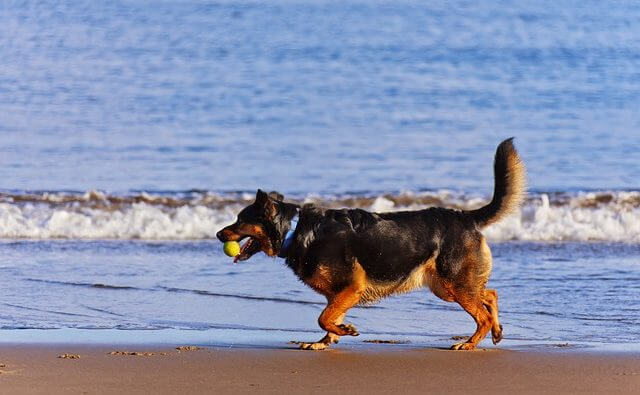iHeartDogs is reader-supported. When you buy via links on our site, we may earn an affiliate commission at no extra cost to you.
The 2018 survey conducted by the Association for Pet Obesity Prevention found that 56% of dogs in the United States are overweight or obese. Obesity can lead to serious complications ad health concerns for your dog, and it can rescue the quality of their life if not addressed properly. Overfeeding, too many treats, and not getting enough exercise/activity can lead to your dog being overweight, but thankfully, this issue is easy to treat through dietary and lifestyle changes (and a commitment to sticking with those changes!). The first step for pet parents is to understand how to properly portion your dog’s meals to avoid accidentally overfeeding and to ensure a happier, active lifestyle. Nom Nom can help get you there!

The Problem with Dog Food Serving Suggestions
Most people simply follow the recommended serving suggestion found on a package of dog food. These portion sizes are based on calorie requirements for average dogs and do not account for your dog’s activity level, age, or other pertinent factors that affect weight. The consequence is that many of the nutrition labels used across the industry may be far overinflated and could contribute, in the long term, to obesity and a host of health consequences for your dog.

Portions Should be Determined Individually
When figuring out how much you should feed your dog there is no generic response. Every dog metabolizes, digests, and uses food in their own unique way, just like human beings do. When seeking to understand the right portion your dog should eat to maintain a healthy weight, factors such as age, activity level, sensitivities, size, and medical history should all come into account.
Further, portions will change as conditions in your dog change, and thus, meal sizes should be adjusted as needed. For example, a dog that spends all summer running alongside her mama 4 days a week will need more fuel to power her activities than that same dog will need when winter weather keeps her off the running track.
Your vet can help you zero in on a baseline calorie requirement by asking you some basic lifestyle questions and physically examining your dog. You should be able to leave the conversation with a precise number of calories your dog needs. This allows you to provide the appropriate amount of calories regardless of the type, brand, or formula of food you give your dog.

Don’t Forget to Calculate Snacks
One way that well-meaning dog parents end up overfeeding their pup is by not taking snacks, treats, table scraps, or extras into account. Treats are typically high in calories and need to be added to the daily total, especially if a dog is on a weight loss plan. If you supplement your dog’s regular food with fats, oils, meat, or dairy be sure to account for them and adjust the quantity of regular food accordingly.
Say Goodbye to Portion Guesswork with Nom Nom
This can be a lot to take in and understand at once, and it can be especially difficult to make sure your dog is getting a balanced, perfectly portioned meal every day. Thankfully, Nom Nom takes the guesswork out of measuring and portioning and carefully calculates how many calories your pup needs based on the individualized data you provide, including their weight, activity level, and age. They even take into consideration your pet’s past diet history to adjust accordingly to ensure a smooth transition to fresh food. These factors are put into an algorithm to create individualized portions that will help your dog reach his weight goals, whether it’s losing, gaining, or just maintaining that ideal healthy weight.
By perfectly portioning every meal, Nom Nom ensures that you know exactly how much your dog should be eating, and are able to carefully track weight gains or losses over time. With no scooping or measuring ever required, you can say goodbye to guesswork and hello to fresh meals made with restaurant quality ingredients – perfect for your dog’s health journey.
 Toledo, United States.
Toledo, United States.
